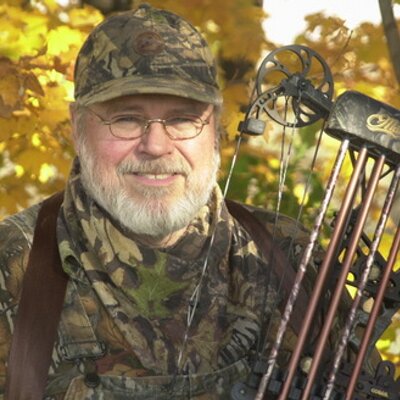Editor’s Note: This is part one of the sixth article in an occasional series profiling the river basins of Kentucky.
The Cumberland River Part One: The Lower River Basin
The Cumberland River is about 700 miles long, arising in southeastern Kentucky near the Virginia line, flowing southwestward through Tennessee, then turning north, to its confluence with the Ohio River at Smithland, in Livingston County.
The Cumberland River basin drains 7,000 square miles in eastern and Western Kentucky, and 11,000 square miles in north-central Tennessee.
The Cumberland River was named on April 17, 1750 by explorer and physician Thomas Walker, in honor of William Augustus, the Duke of Cumberland. Walker and his exploration party from Virginia first encountered the river at Pine Gap, in modern-day Bell County.
In this article, the lower basin is defined as the Cumberland River from its mouth, upstream to the Kentucky/Tennessee line.
Early History
Native Americans knew the Cumberland River as Wasioto, and French traders called it the Riviere des Chaouanons, or “River of the Shawnee.”
Lower Cumberland River Tributaries
Most of the lower Cumberland River basin was inundated by the creation of Lake Barkley, in July 1966.
The longest tributary is the Little River. It’s Muddy Fork arises in Caldwell County, and the north and south forks of its Stinking Fork, arise in Christian County. All these forks flow into Lake Barkley west of Cadiz, in Trigg County.
It’s 30.6 miles from Barkley Dam, at Lake City, to the river’s mouth in Livingston County. There are 10 small streams that flow into the tailwaters, the largest being Livingston Creek, which arises in Crittenden County, south of Marion.
Lakes and Parks
Lake Barkley, named by Congress to honor Kentucky Senator and Vice President Alben W. Barkley, is 30 miles southeast of Paducah, in Trigg, Lyon, and Livingston Counties.
The 7,985-foot-long earthen and concrete dam includes a navigation lock, canal, and hydroelectric plant.
Lake Barkley forms the eastern boundary of Land Between the Lakes (LBL), a 170,000-acre national recreation and demonstration area authorized by President John F. Kennedy in 1963.
At summer pool (elevation 359), the 57,920-acre lake (42,020 of the acres are in Kentucky) is 118 miles long and has 1,004 miles of shoreline. The lake headwaters extend to Cheatham Lock and Dam in Montgomery County, Tennessee.
The winter drawdown reduces Lake Barkley to 45,210 acres at elevation 354.
Lake Barkley is connected to Kentucky Lake by a canal at Grand Rivers.
There are two state parks.
Mineral Mound State Park is on the northeastern shore of the lake, just south of Eddyville, on Finch Lane.
Open with seasonal days and hours of operation, the park encompasses 541 acres, and was established in 1991 on land that is linked historically to author F. Scott Fitzgerald.
Facilities include an eighteen-hole golf course, picnic grounds, fishing pier and boat ramp (no fee to launch).
For information telephone 270-388-3673.
Lake Barkley State Resort Park, open year-round, is about five miles west of Cadiz, off U.S. 68.
The park encompasses 3,700 acres and was established in 1964.
Facilities include a 120-room lodge, 13 cabins, restaurant and bar, a 79-site campground, eighteen-hole golf course, trap range, fitness center and indoor pool, six miles of hiking trails, seven miles of mountain biking trails, marina, boat launching ramp (no fee to launch), tennis courts, and outdoor pool for lodge and cabin guests.
For information telephone 270-924-1131.
Fish and Wildlife Resources
Lake Barkley and the adjoining LBL are a haven for hunters and anglers, with many wildlife viewing opportunities.
There are quota and open hunting seasons for white-tailed deer, wild turkeys, and small game. Additionally, there are hunting opportunities for waterfowl on Lake Barkley.
Details of LBL hunting seasons
Fishing opportunities abound for black bass, crappie, sunfish, temperature bass and sauger in Lake Barkley. Additionally, there are several small lakes in LBL open to fishing.
There are eight marinas on Lake Barkley, 17 boat launching ramps on the eastern shore of Lake Barkley in addition to the ramps at the marinas, and 11 boat launching ramps on the western shore of Lake Barkley in LBL.
Largemouth Bass make up about 68 percent of all black bass caught in Lake Barkley, according to the 2021 creel survey.
The best spring fishing begins when lake begins to rise and fish move up on the flats.
A top strategy that time of year is slow-rolling spinnerbaits over submerged roadbeds, as the water warms up into the low 60s.
Special fishing regulations and launching ramps for trailered boats on Lake Barkley
Wildlife viewing opportunities include elk, bison, white-tailed deer, wild turkeys and several species of raptors, including osprey and bald eagles.
Wildlife viewing details for Land Between the Lakes
Visit LBL’s Elk and Bison Prairie for a unique experience in Kentucky. From the safety and comfort of your vehicle elk and bison can be observed up close, with excellent opportunities for photographs.
The lower Cumberland River basin offers unsurpassed opportunities for a wide range of outdoor activities, including hiking, camping, fishing, hunting and nature studies. LBL is the centerpiece of the lower Cumberland River basin and one of Kentucky’s top outdoor destinations.



























